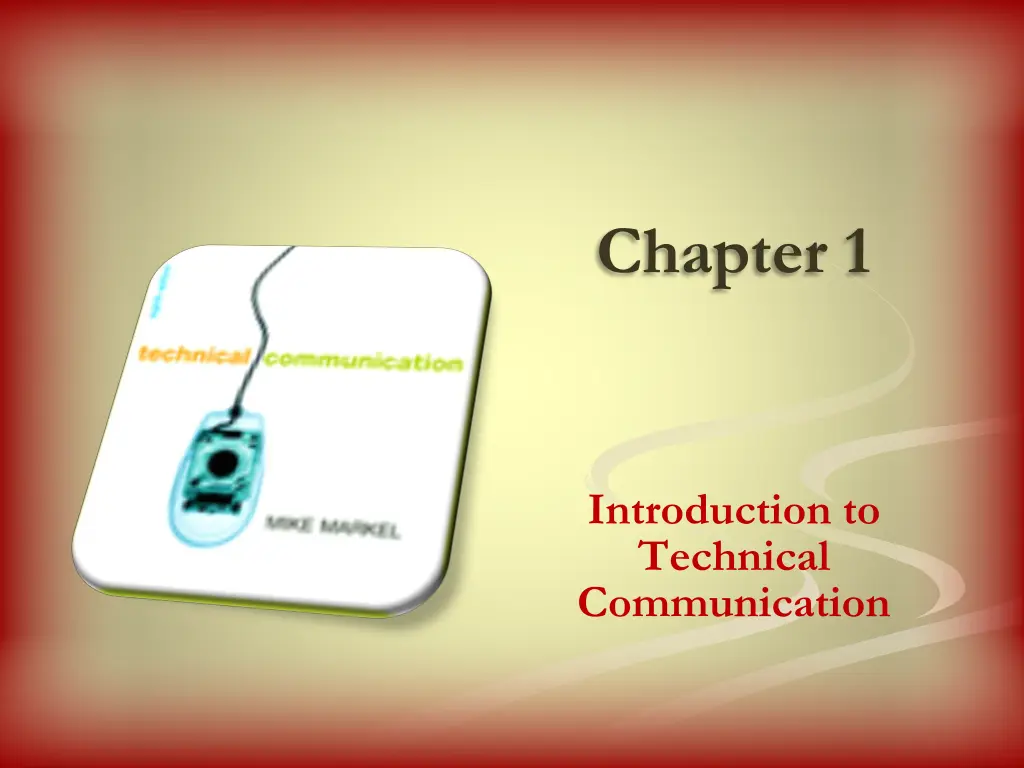
Technical Communication Essentials and Best Practices
Explore the fundamentals of technical communication in Chapter 1, covering the production, characteristics, importance of graphics, measures of excellence, and the necessity of honesty and clarity in technical communication. Learn about the roles of technical professionals and the essential elements that make technical communication effective and professional.
Download Presentation

Please find below an Image/Link to download the presentation.
The content on the website is provided AS IS for your information and personal use only. It may not be sold, licensed, or shared on other websites without obtaining consent from the author. If you encounter any issues during the download, it is possible that the publisher has removed the file from their server.
You are allowed to download the files provided on this website for personal or commercial use, subject to the condition that they are used lawfully. All files are the property of their respective owners.
The content on the website is provided AS IS for your information and personal use only. It may not be sold, licensed, or shared on other websites without obtaining consent from the author.
E N D
Presentation Transcript
Chapter 1 Introduction to Technical Communication
Who produces technical communication? Technical professionals Technical communicators (technical writers) Chapter 1. Introduction to Technical Communication 2
Six Characteristics of Technical Communication Addresses particular readers Create a profile of expected audience Helps readers solve problems Reflects an organization's goals and culture Is produced collaboratively (usually) Uses design to increase readability Looks professional Improves navigation Improves understanding Consists of words or graphics or both Chapter 1. Introduction to Technical Communication 3
Graphics help the writer: make the document more interesting and appealing to readers communicate and reinforce difficult concepts communicate instructions and descriptions of objects and processes communicate large amounts of quantifiable data communicate with nonnative speakers Chapter 1. Introduction to Technical Communication 4
Measures of Excellence in Technical Communication Honesty Clarity Accuracy Comprehensiveness Accessibility (navigability) Conciseness Professional appearance Correctness Chapter 1. Introduction to Technical Communication 5
Three Reasons to Be Honest as a Technical Communicator It is the right thing to do. If you are dishonest, readers can get hurt. If you are dishonest, you and your organization could face serious legal charges. Chapter 1. Introduction to Technical Communication 6
Two Reasons That Technical Communication Must Be Clear Unclear technical communication can be dangerous. Unclear technical communication is expensive. Chapter 1. Introduction to Technical Communication 7
